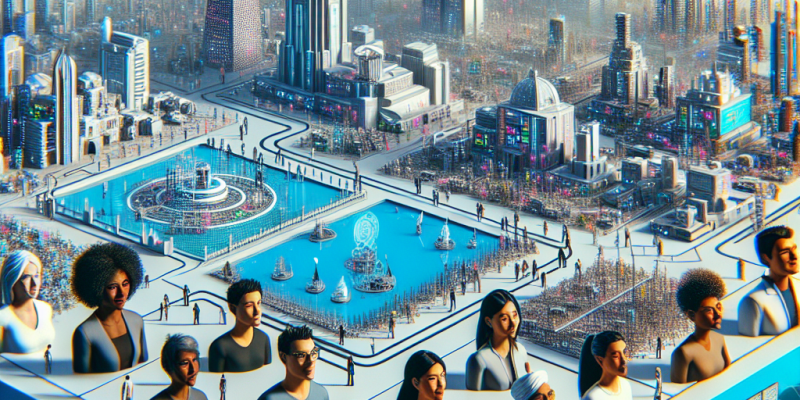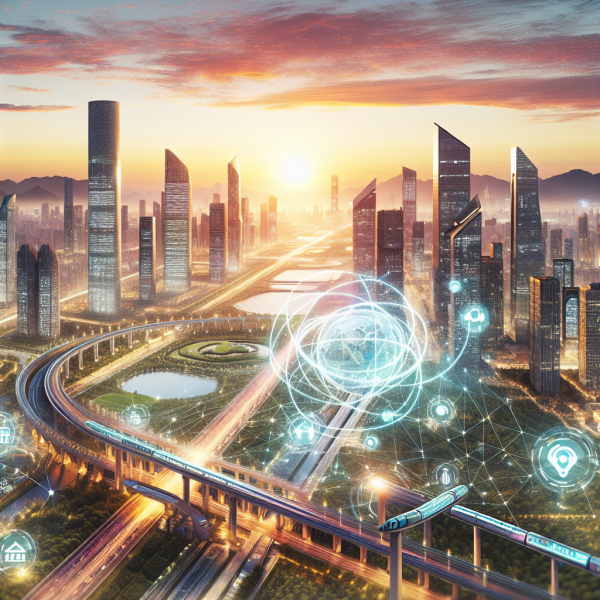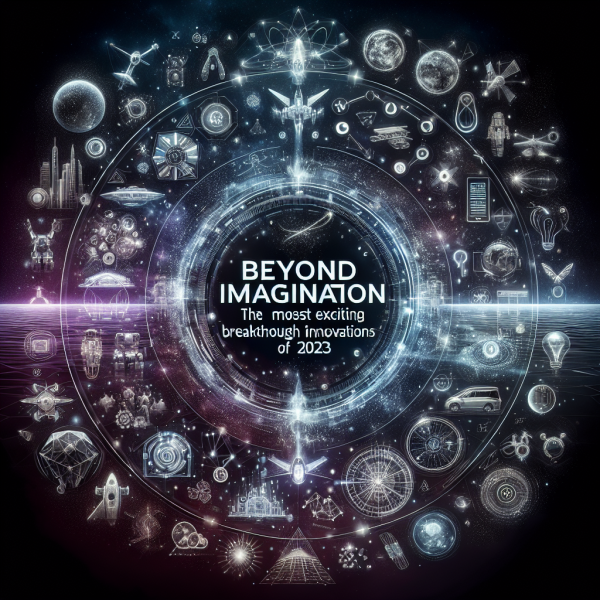The Metaverse in 2024: Opportunities and Challenges for Creators and Users

The Metaverse in 2024: Opportunities and Challenges for Creators and Users
As we step into 2024, the concept of the Metaverse has evolved significantly from its early iterations, transforming from a buzzword into a tangible digital landscape where social interaction, commerce, entertainment, and creativity converge. The Metaverse now presents expansive opportunities for creators and users alike, while also presenting a myriad of challenges that need to be navigated.
Opportunities for Creators
-
New Revenue Streams: As the Metaverse grows, so too do the financial opportunities for creators. Virtual real estate has become a hot commodity, with users willing to pay substantial amounts for prime digital land. Artists can sell their work as NFTs, and musicians can host virtual concerts, engaging fans in ways that transcend physical limitations. Brands are also collaborating with creators to generate unique experiences, adding another layer to revenue potential.
-
Enhanced Collaboration: The Metaverse opens the door for collaborative projects that bring together creators from around the globe. Virtual tools and environments facilitate seamless cooperation among musicians, designers, and developers, allowing them to co-create without the constraints of geography. This interconnectedness enriches creativity, fostering innovation as diverse talents converge to produce fresh content.
-
Audience Engagement: The immersive nature of the Metaverse enables creators to engage audiences like never before. From interactive experiences to personalized content, users can become part of the story. This direct engagement strengthens community bonds and provides valuable feedback to creators, helping them refine their offerings in real-time.
- Accessibility: The Metaverse is breaking down barriers of entry for aspiring creators. With various platforms emerging that cater to different skills and interests, individuals can easily promote their work, build a following, and monetize their creativity without needing extensive resources or formal training.
Opportunities for Users
-
Immersive Experience: For users, the Metaverse offers an unparalleled immersive experience. Virtual reality (VR) and augmented reality (AR) technologies provide lifelike environments that create more profound and meaningful connections with content. Whether attending a concert, exploring a museum, or socializing with friends, users can engage in ways that feel richer and more engaging than conventional media.
-
Social Interaction: In the Metaverse, users can form communities based on shared interests, transcending geographical barriers. This virtual socialization fosters inclusivity, allowing individuals from diverse backgrounds to connect, collaborate, and build friendships. Users can create their avatars, tailored to express their personalities, further enhancing social dynamics.
-
Personalization: The Metaverse can serve as a highly personalized space for users. From custom environments to tailored content, users can curate their experiences. Enhanced algorithms analyze preferences, delivering bespoke recommendations that align with individual tastes, making the digital interaction more fulfilling.
- Skill Development: The Metaverse is an ideal platform for learning and development. Users can participate in virtual classes, workshops, and collaborations with industry experts, gaining new skills and knowledge in an interactive and engaging manner. This educational potential is a significant advantage, especially for those unable to access traditional resources.
Challenges for Creators
-
Oversaturation of Content: As more creators flock to the Metaverse, the competition for user attention intensifies. Standing out in a sea of content becomes a daunting challenge. Creators must continuously innovate and deliver high-quality experiences to capture and retain audience interest.
-
Monetization Struggles: While opportunities exist, monetizing work in the Metaverse can be complex. Different platforms have varying revenue-sharing models, and navigating these financial systems may prove challenging. Additionally, fluctuating cryptocurrency prices can affect the financial viability of Metaverse-based income streams.
- Technical Limitations: As the Metaverse relies heavily on technology, creators must stay abreast of rapid changes in tools, platforms, and hardware. Understanding and adapting to these developments can be a barrier, particularly for those less technically inclined.
Challenges for Users
-
Digital Divide: Despite the opportunities for socialization and interaction, access to the Metaverse remains uneven. High costs of VR headsets and internet access can exclude certain demographics, exacerbating the digital divide.
-
Privacy and Security Concerns: The rise of the Metaverse raises significant concerns regarding privacy and data security. Users may unwittingly compromise personal information while navigating these platforms, creating vulnerabilities that malicious entities could exploit.
- Mental Health and Moderation: As the immersive experience of the Metaverse blurs the line between reality and virtual life, concerns regarding mental health and well-being arise. Users may experience addiction-like behaviors or social isolation. Moreover, issues of moderation and safety in these environments need addressing to prevent harassment and harassment.
Conclusion
As we look ahead in 2024, the Metaverse stands on the precipice of extraordinary growth and evolution, offering creators and users a wealth of opportunities that were once unimaginable. However, it is equally crucial to engage with the challenges it presents critically. Balancing innovation, creativity, inclusivity, and security will be essential to ensure that the Metaverse becomes a space that benefits everyone involved. Navigating this digital frontier will require collaboration and adaptability, as the roles of creators and users redefine what it means to connect in an ever-changing digital landscape.














